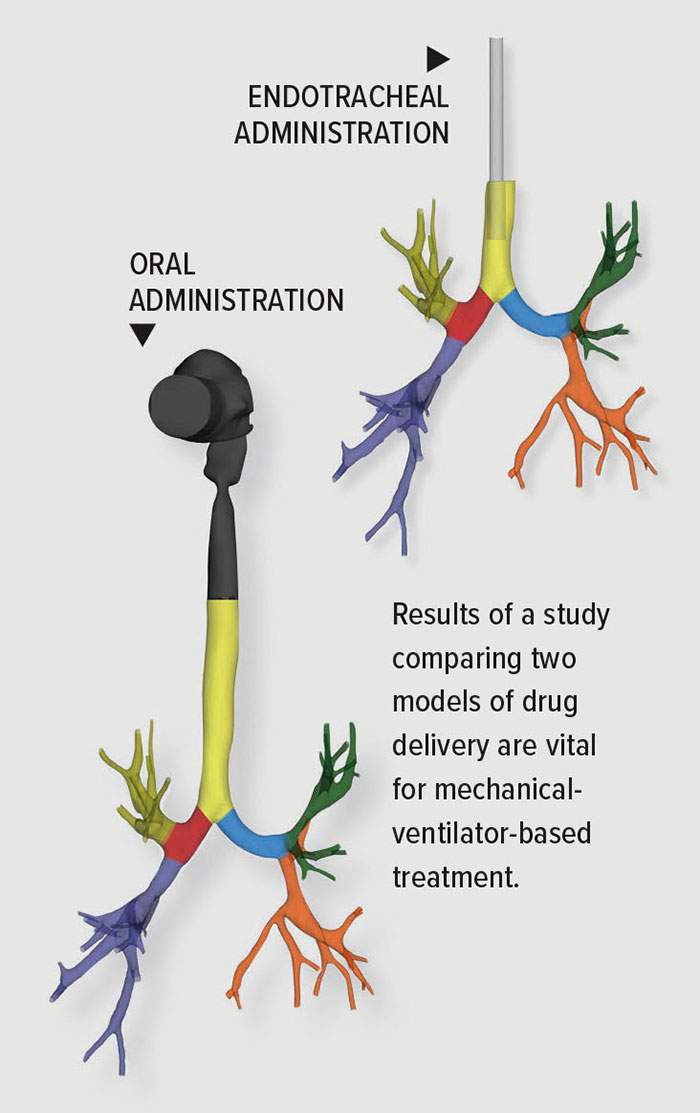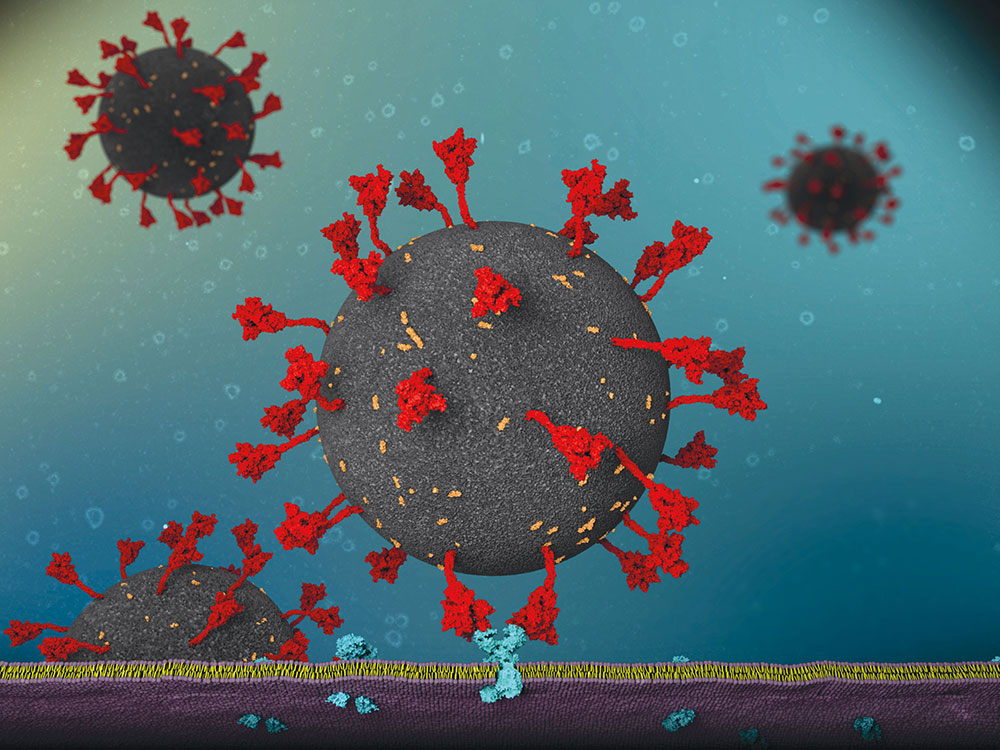|
The specific interaction between ACE2 glycans and the SARS-CoV-2 spike protein, illustrated above, makes the separation of the virus from cells so difficult, says Lehigh Bioengineering Professor Wonpil Im. |
Bioengineering researchers have identified a previously unknown interaction between angiotensin-converting enzyme 2 (ACE2) receptors in human cells and the spike, or “S,” protein of SARS-CoV-2, the virus that causes COVID-19. This information could aid in the development of new strategies to block SARS-CoV-2 entry into human cells.
The finding may partially explain the higher infection rate of COVID-19 compared with the similar virus that caused the 2002–2004 SARS outbreak. Lehigh professors X. Frank Zhang and Wonpil Im and their teams made the discovery using combined single-molecule force spectroscopy and molecular dynamics simulations.
“Our goal was to characterize SARS-CoV-2 and study the protein-protein interactions during its invasion of human cells to provide more insights into the mechanisms that make this first step possible,” says Zhang. “After we carefully removed all of the ACE2 glycans and measured the force of the interaction, we saw that the strength of the SARS-CoV-2 spike–ACE2 interaction fell back to levels similar to SARS-CoV-1.”
Their findings appear in a special issue of Biophysical Journal. Additional authors include Wenpeng Cao, Decheng Hou, Seonghan Kim, and Chuqiao Dong (from Lehigh), as well as Wanbo Tai and Lanying Du (from Lindsley F. Kimball Research Institute, New York Blood Center).
 Improving ventilator-based therapy through advanced fluid dynamics
Improving ventilator-based therapy through advanced fluid dynamics
People with chronic lung diseases who are placed on ventilators may experience pulmonary conditions that are relevant to COVID-19. These patients will often receive drugs like albuterol through an endotracheal tube, a treatment that relaxes bronchial muscles and improves airflow to the constricted lung airways.
Researchers from Lehigh and the University of Arkansas for Medical Sciences recently sought to determine the most effective methods for administering albuterol via ventilator. The team members gave a virtual talk on their work during the 73rd Annual Meeting of the American Physical Society’s Division of Fluid Dynamics in November 2020.
Ariel Berlinski and his group ran aerosol characterization experiments at the University of Arkansas. Rahul Rajendran, a new Lehigh PhD, used the results to investigate drug delivery through computations.
“The research objective was to evaluate the efficiency of drug delivery when the nebulizer type and its placement were varied in the ventilator circuit,” says group member Arindam Banerjee, a professor of mechanical engineering and mechanics in the Rossin College.
The researchers found that a vibrating mesh (rather than a jet) nebulizer placed on the dry side of the humidifier delivers the highest dose to the lung. Administering albuterol through intubation works most effectively for smaller particles, while oral administration is more efficient for larger particles.
Illustration Credit: Rahul Rajendran
 Examining pandemic health toll with multidisciplinary lens
Examining pandemic health toll with multidisciplinary lens
Researchers from all five of Lehigh’s colleges are studying the physical and mental health impact of the COVID-19 pandemic on the Lehigh Valley community. The team, which is led by College of Health associate professor Fathima Wakeel, includes Karmel S. Shehadeh (pictured), an assistant professor of industrial and systems engineering, who brings experience in operations research and analytics in health care delivery.
The community study focuses on vulnerable populations (including racial/ethnic minorities and people with chronic conditions) and demographic characteristics such as pre-pandemic individual/family health status, pandemic-induced economic and social stressors, and the ability to follow social distancing guidelines. The results are expected to provide novel insights into the mechanisms by which potential predictors of health are related to short-term local effects of the pandemic, as well as the longer term impacts at the state and national levels.
Shehadeh will use advanced methods to analyze the data and build models that help make sense of the pandemic’s health repercussions. “We can leverage what we learn from this pandemic to design data-driven policies and strategies to lead health care transformation to better prepare for future health challenges,” she says.

